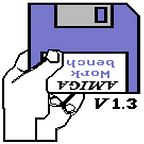Amazing Military Infographics
An appreciation
Some nights I like to get the kids to bed, pour a drink, and search the web for military-produced PDFs in order to look at the amazing graphics within them. I’d thought I was the only person with this hobby, but a few weeks ago my friend Finn Smith told me that he, too, likes military PDF graphics. The Internet is wonderful at bringing people together.
Finn and I soon agreed that “battlespace awareness” is a particularly good term to search. The best way to start such searches is to ask Google to only search PDFs within military domains. Like this:
“battlespace awareness” filetype:pdf site:*.milWhat is “battlespace awareness?” Well, seen at a very, very high level, various parts of the U.S. military are trying to build an operating system for use in wartime situations. This effort has presented all sorts of challenges and funding opportunities. What should the interface look like? How should the enemy be identified on a screen? What role should drones play? And so forth. And as a side-effect of all this thinking people occasionally create diagrams that explain their ideas and justify their budgets. Here’s an example, from “Joint Synthetic Battlespace: Cornerstone for Predictive Battlespace Awareness,” by Phister, Bush, and Plonisch.
There is a very interesting visual language at work here. Two gray eggs and one yellow egg hover above abstract tricolor pastel stripes reminiscent of a flag. Birthing forth from the blue nexus where the eggs merge there is a circle and the ominous word “Futures”—because the ultimate goal of battlespace awareness is, of course, increasing the predictive ability of the people in the battlespace. There is a cross-cutting set of domains as well: Physical, information and cognitive, and yet more domains below this one. The overall effect is that of an easter basket filled with killing power.
Each term becomes a little puzzle: What is the “Commander’s Intent”? How does it result from the intersection of “Wargame Modeling” and “Game Plans”? Working backwards, referring to the paper, you can learn not just about battlespace awareness but how the military thinks and sees the world.
Here’s a different sort of image, a map from the “Joint Operating Concept” document written for the Department of Defense, entitled “Irregular Warfare: Countering Irregular Threats”:
This map is part of what the paper’s authors call a “notional vignette”—what civilians might call a “story” or “tale.” It serves a detailed narrative of suppressing the unrest in Sharkia. “While grounded in real challenges,” we are told, this portion of the document, “should not be interpreted to be current events or situations in any country.” Here’s how it starts:
Sharkia, a state in the Central Gulf region, and Jaiysh al Safrani (JAS), a violent extremist group, are waging an irregular campaign against countries in the region and the United States.
It goes from there and it’s pretty good. Everything works out in the end, with some U.S. intervention, although there’s an ongoing risk of Sharkian unrest.
There’s also a strong tendency for graphics to include icons of satellites and jet fighters, because they can:
And org charts frequently show up. Many of them go up to the President. Who wouldn’t put the President in their org chart if they could?
“Networked on the Global Information Grid” just rolls off the tongue, no? Some graphics are incredibly cool and simultaneously insane.
While some things defy easy categorization:
To find the truly mind-blowing stuff, you need to go one level up and look for the weird meta-objects, things like the Department of Defense Architecture Framework. I can’t explain it better than they do:
The Department of Defense Architecture Framework (DoDAF), Version 2.0 is the overarching, comprehensive framework and conceptual model enabling the development of architectures…
If you want to develop an architecture, this is your framework—an abstraction specifically designed for manufacturing abstractions. Here’s one way to look at it:
Take some time with that graphic. After a while you realize that this image could be used anywhere in any paper or presentation and make perfect sense. This is a graphic that defines a way of describing anything that has ever existed and everything that has ever happened, in any situation. The United States Military is operating at a conceptual level beyond every other school of thought except perhaps academic philosophy, because it has a much larger budget.
Part of what makes military diagrams so fascinating is that they look a lot like the images civilians use to do their regular workaday jobs. It’s just software and hardware, after all, and there are only so many ways to draw a network diagram. Yet the scale of these systems is immense; the lines being drawn are between jets and satellites, not between a couple of web servers. You can smell the money burning. Also there is a foundational fact that applies to each image: No matter how abstract they are, these pictures describe systems that the U.S. military uses to make optimal, efficient decisions about killing other humans.
